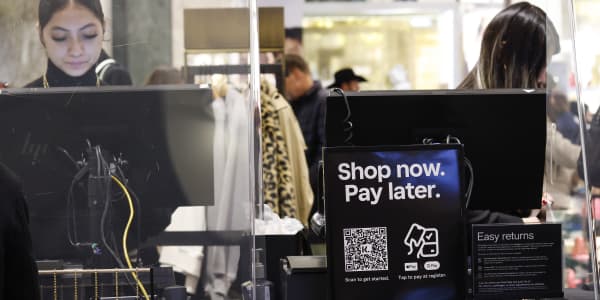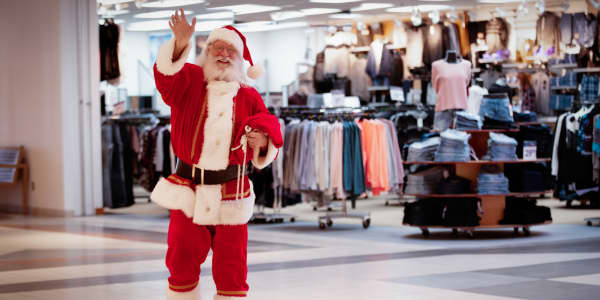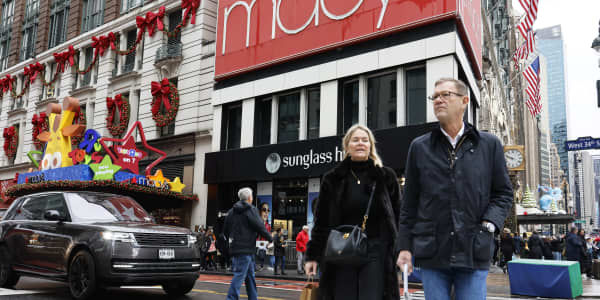With a lower unemployment rate, moderate wage gains and cheap fuel and food prices, the pieces are falling into place for a more robust holiday shopping season.
Yet while the outlook is slightly more upbeat for retailers, a round of sales forecasts is calling for growth that's roughly in line with last year.
Despite 2015's results being held back by unseasonably warm temperatures — which forced retailers into taking aggressive price cuts — Deloitte predicts holiday spending will increase between 3.6 percent and 4 percent from November through January, to top $1 trillion. That's roughly in line with last year's results, when sales excluding motor vehicles, gasoline and restaurants rose 3.6 percent.
A separate prediction from Kantar Retail is calling for 3.8 percent growth in the fourth quarter, compared with a 3.4 percent gain in 2015. Its forecast excludes the same categories as Deloitte's prediction.
Retail Next is calling for a more dramatic uptick from last November and December, when it says sales grew 1.3 percent by its measures. Still, it expects 2016 holiday growth to be roughly in line with the other two forecasts, at 3.2 percent.
"Folks are opening up their wallets a little bit," said Rod Sides, who heads up Deloitte's Retail & Distribution practice.
Indeed, consumers are loosening their purse strings. The personal saving rate was slightly lower in July than at the start of the year, falling to 5.7 percent from 6.2 percent, according to government data. Meanwhile, preliminary consumer confidence figures rose to 89.8 percent in September, up 2.6 percentage points from the prior year.
Yet an expected rise in health-care costs will likely weigh on consumers' psyche, Sides said. That's because Americans will be selecting their coverage plans for the upcoming year at the same time they're doing their holiday budgeting.
Uncertainties surrounding the election are also seen keeping the lid on spending early in the season, though retailers are expected to make up for any lost spending once all the votes have been tallied. They could even see a lift from pent-up demand, Deloitte said. That would be just in time for the most critical shopping days, including Black Friday.
Thanks to a series of minimum wage hikes across the U.S., Sides predicts the low-income consumer will be in better shape to spend this holiday. But while the upper echelon of shoppers still has purchasing power, he said they will likely dedicate a larger share of their income to experiences over traditional goods. That trend has held back retail sales growth for more than a year.
Consumers' addiction to discounts has likewise challenged retailers' ability to grow the top line, as lower prices mean they have to sell more units to increase sales. Even though retailers' inventory levels are more rational heading into this holiday season, Sides expects those with run-of-the-mill merchandise will be forced to continue down the path of excessive promotions.
"They can have a reasonable holiday season, but the price will be at [the expense of] margin," he said. On the flip side, those retailers who can carve out a niche — or create a sense of scarcity for their merchandise — will win.
Companies who check off those boxes are off-price chains, where the merchandise is always changing, or small business players who are slowly stealing share from their larger competitors.
Online sales are once again expected to edge some 17 percent to 19 percent higher, reaching $96 billion to $98 billion, according to Deloitte. That growth rate is in line with last year's figures, Sides said. Kantar Retail is calling for a similar 15.9 percent lift in fourth-quarter online sales, which would be a slight acceleration over last year's 14.8 percent increase, by their methodology.
Retail Next predicts digital sales will rise 14.9 percent, compared with 12.6 percent in the final two months of last year. If realized, they would account for 16 percent of total retail sales in November and December, up from 14.4 percent in 2015, the firm said.





